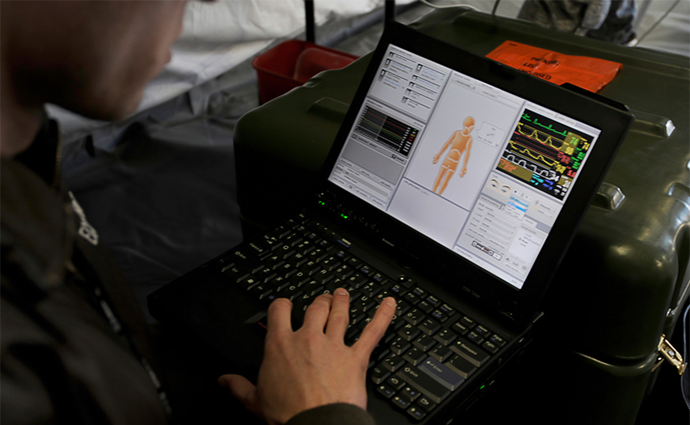Telemedicine Helps Hospitals Gain Infectious Disease Expertise
Infectious disease specialists are few and far between, yet every hospital needs their expertise on a regular basis. Telemedicine technology is making that possible, especially for smaller and rural providers.

Source: ThinkStock
- With virus outbreaks showing up more often in the daily newsfeed and antibiotic stewardship a growing concern, healthcare providers are turning to telehealth to make sure they have on-demand access to infectious disease specialists.
“Disease care today is much more complicated than it used to be,” says Rima Abdel-Massih, MD., chief medical officer for Infectious Disease (ID) Connect, a tele-ID company recently spun out of UPMC. “Many hospitals can no longer manage care for these patients.”
Faced with a growing need for and a dwindling supply of ID specialists, health systems are using virtual care platforms to access these experts when and where needed. UPMC Enterprises recognized that need and developed ID Connect, a connected care platform that now serves 15 hospitals (10 in the UPMC system and five outside) and is aimed at the 4,000 small acute care hospitals across the country who may lack the resources.
“With the growing threat of drug-resistant organisms and costly government penalties for healthcare-associated infections, it has never been more critical for hospitals to properly diagnose, treat and prevent such infections,” Abdel-Massih noted in a press release announcing the new company. “However, with ID specialists in short supply, many hospitals, especially smaller, community facilities, are struggling to meet this need. ID Connect was created to fill that gap.”
“Hospitals absolutely understand this gap that they have,” adds ID Connect President David Zynn. “Without it, they lose patients (who are transferred to larger hospitals with the appropriate resources. “What we’re hearing from these hospitals right now is that we can help them keep their patients in the community … and continue to provide the care they need.”
“We haven’t had a patient that couldn’t be treated by telemedicine,” he notes.
Officials at the Ascension St. Michael’s health system know that feeling all too well. The Wisconsin-based network had one full-time infectious disease specialist covering eight hospitals – four community and four critical access – and was able to keep only about half of its ID patients, transferring the rest to hospitals more than an hour away.
Then the health system lost that specialist.
“It became a huge need for us,” says Vimarsh Raina, MD, Ascension St. Michael’s medical director for virtual care, who helped to launch the health system’s tele-ID program last year in a partnership with Eagle Telemedicine. “There was this huge gap across the whole region.”
With the telehealth platform, Raina says, Ascension St. Michael’s is connecting patients and doctors to infectious disease specialists 20 to 50 times a month, with another 15 to 40 online care sessions scheduled for follow-up visits. That has added up to 220 virtual care consults and 167 follow-up visits since December.
And the health system has been able to keep all of its patients.
“I used to have to explain to patients (and their families) why they had to be transferred out,” says Robyn Schertz, MD, vice president of medical affairs at Ascension St. Michael’s Hospital. “We couldn’t give them the care they needed. Now, this helps us to keep our patients, and it eases our minds as to how we might be able to deliver better care.”
A tele-ID program not only help smaller hospitals keep their patients, but improves their medication management protocols. According to Zynn, healthcare-associated infections affect as much as 10 percent of a hospital’s patient population and cost more than $40 billion annually. As many as half of all antibiotic prescriptions are unnecessary, he says, contributing to wasteful expenditures while increasing the risk of harmful drug reactions and antibiotic resistance.
There are other benefits as well. In a recent study published in the journal Clinical Infectious Disease, researchers at Pennsylvania’s Lehigh Valley Physicians Group found that such a program not only reduced the need for patient transfers, but reduced the average length of stay and the cost of antibiotics.
“Nationally, we see a compelling need for improved infectious disease care in hospitals,” Zynn said in the press release announced ID Connect’s launch.
As with Ascension St. Michael’s in Wisconsin, Zynn says the telemedicine platform gives healthcare providers large and small and opportunity to collaborate, enabling the larger systems to share their expertise and reduce crowding at their facilities and allowing the smaller hospitals to improve their care and keep their beds occupied and their staff busy serving the community.
“They used to typically come to us in Pittsburgh,” he says. “Now we’re turning it around and going to them.”
